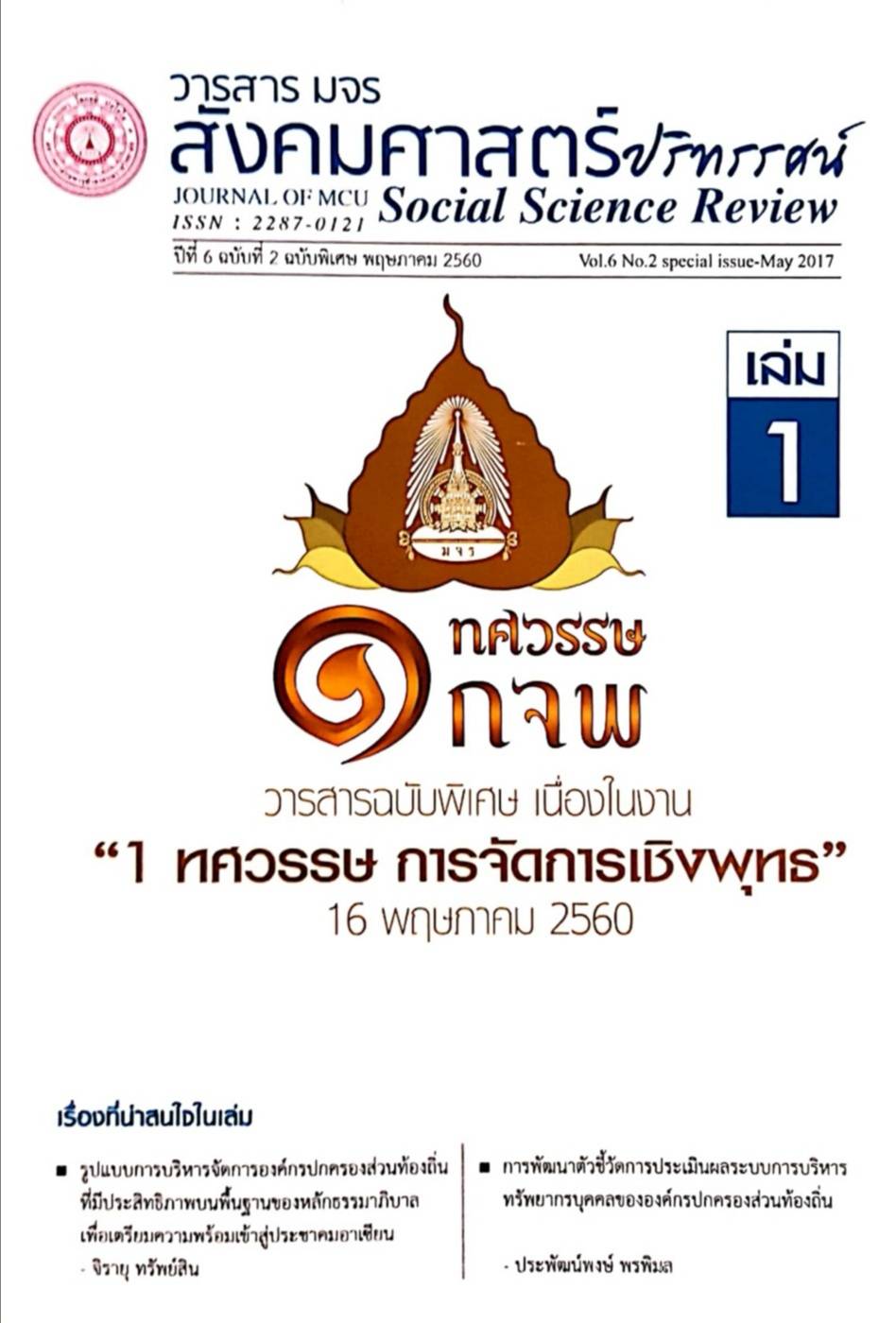METHODS OF DEVELOPING CHIANG MAI 'S TOURISM INDUSTRY WORKERS' CAPACITY FOR ASEAN INTEGRATION
Abstract
Objectives of this research were 1. To studying business operators’ competency cluster, tourism business efficiency development, development from
government, and Chiang Mai’s tourism business capability, 2. examining the relation between business operators’ capability, latency of tourism business operation,
development from government and effectiveness of tourism business and 3. suggesting ways of Chiang Mai tourism business operators’ competency development, in order to accommodate the integration of ASEAN Economic
Community (AEC). The conceptual framework and studying theory focused on competency, ability development, development from government and organizational latency. This was a Quantitative Research, for which data was collected from sample surveys of 320 Chiang Mai’s tourism business operators, processed by a computer package software using Descriptive Statistics, to analyze independent variable,
dependent variable, and intervening variable related to the research hypothesis, by Exploratory Factor Analysis (Pearson correlation)’ Path analysis.
Findings were as follows:
1) 1) the finding indicated that in term of creativity, the first point was that operators can concentrate and solve problems in tourism business operation, the
second point was marketing, focusing mainly on domestic and ASEAN countries, development of basic infrastructure and facility supporting tourism, for instance,
development of transportation, administrative and equipments to reach standard, 2) the finding pointed out that the relation between business operators’
capability, latency of tourism business operation, development from government and effectiveness of tourism business were at the level of statistical significance .01.
3) it was found that 4 ways of Chiang Mai tourism business operators’ competency development are suggested, 1) competency 2) efficiency development
3) development from government and 4) organizational latency.
References
กรุงเทพมหานคร : การท่องเที่ยวแห่งประเทศไท..
นาชัย ทนุผล. (2542).แนวคิดและวิธีการจักการท่องเที่ยวเชิงนิเวศ. เชียงใหม่ : มหาวิทยาลัยแม่โจ้.
นิคม จารุมณี. (2544). การท่องเที่ยวและการจัดการอุตสาหกรรมท่องเที่ยว. กรุงเทพฯ :
โอ.เอส.พริ้นติ้ง เฮ้าส์,
นิศา ชัชกุล. (2557). อุตสาหกรรมการท่องเที่ยว. กรุงเทพฯ: สานักพิมพ์แห่งจุฬาลงกรณ์
มหาวิทยาลัย.
มิศรา สามารถ. (2543). การมีส่วนรวมของชุมชนท้องถิ่นในการบริหารจัดการด้านการท่องเที่ยวเชิง
นิเวศ. กรุงเทพฯ: สถาบันดารงราชานุภาพ สานักงานปลัดกระทรวงมหาดไทย.
วีระยุทธ ทนทาน. (2555). แนวทางการส่งเสริมสมรรถนะการทาธุรกิจของผู้ประกอบการการค้า
ชายแดนไทย-ลาว ในภาคตะวันออกเฉียงเหนือเพื่อรองรับการบูรณาการของประชาคม
อาเซียน. วิทยานิพนธ์ปรัชญาดุษฎีบัณฑิต. มหาวิทยาลัยราชภัฎสวนดุสิต.
Fromm, Erich. (1983). Marx’s Concept of Man. New York : Frederick Ungar Publishing
Colorado :Libralies Unlimited Inc.
Griswold, A.B. (1996). Towards a History of Sukhodaya Art. The Fine Arts Dept.
Rittichainuwat. B. N., Qu, Hailin & Brown, T. J. (2001). Thailand’s intemational travel
image : Mostly favorable. Joumat of Hospitality & Tourism Research.
Downloads
Published
How to Cite
Issue
Section
License
Copyright (c) 2020 Journal of MCU Social Science Review

This work is licensed under a Creative Commons Attribution-NonCommercial-NoDerivatives 4.0 International License.
In order to conform the copyright law, all article authors must sign the consignment agreement to transfer the copyright to the Journal including the finally revised original articles. Besides, the article authors must declare that the articles will be printed in only the Journal of MCU Journal of Social Sciences. If there are pictures, tables or contents that were printed before, the article authors must receive permission from the authors in writing and show the evidence to the editor before the article is printed. If it does not conform to the set criteria, the editor will remove the article from the Journal without any exceptions.





